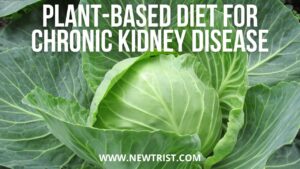Chronic kidney disease diet food lists are fresh fruits and vegetables, bread, pasta, rice, milk, corn, rice cereals, apples, peaches, carrots, green beans, and grapes.
A portion of nuts is equal to 1/4 cup, and a quantity of cooked beans is roughly 1/2 cup. A slice of bread counts as one serving, while a cup counts as one serving of cooked rice or noodles.
Consult 19 years experienced Chief Nutritionist Vasanthi for expert advice and a personalized diet plan. In-person consultation at HSR, Koramangala, Bellandur, Haralur, and video consultation across India.
- Consultation INR 750
- 1 Week personalized diet plan INR 2000
- 1 Month personalized diet plan INR 4000
- 3 Months personalized diet plan INR 9000
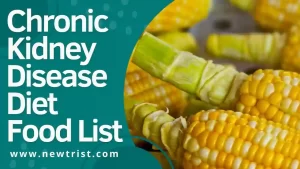
Table of Contents
Chronic kidney disease diet food lists: Phosphorus
Phosphorus might build up in the blood when you have CKD. The bones become thin, weak, and more prone to breaking when the blood phosphorus level is too high because it removes calcium from the bones. Additionally, causing itchy skin, and high blood phosphorus levels can also hurt the bones and joints.
Choose foods and drinks with less phosphorus. Foods lower in phosphorus are
- Fresh fruits and vegetables
- Bread, pasta, rice
- Rice milk (not enriched)
- Corn and rice cereals
- Light-colored sodas, such as lemon-lime and homemade iced tea
Avoid foods and drinks with high phosphorus. Foods higher in phosphorus are
- Meat, poultry, fish
- Bran cereals and oatmeal
- Dairy foods
- Beans, lentils, nuts
- Dark-colored sodas
- Fruit punch, which is processed and bottled
- Canned iced teas have added phosphorus
Chronic kidney disease diet food lists: Potassium
Having excess or insufficient potassium in the blood might cause issues. Potassium can build up in the blood as a result of damaged kidneys, which can seriously harm the heart.
|
Foods Lower in Potassium |
Foods Higher in Potassium |
|
· Apples, peaches · Carrots, green beans · White bread and pasta · White rice · Rice milk (not enriched) · Cooked rice and wheat cereals, grits · Grapes and cranberry juice |
· Oranges, bananas, and orange juice · Potatoes, tomatoes · Brown and wild rice · Bran cereals · Dairy foods · Whole-wheat bread and pasta · Dried beans and nuts |
Chronic kidney disease diet food lists: Protein
The kidneys may have to work harder if one consumes more protein than they require.
Eat protein-rich foods in moderation.
Foods made from both plant and animal sources include protein. Both sources of protein are typically consumed. Foods with animal protein: Dairy, Eggs, Meat, Fish, and Poultry.
Plant-based proteins: Beans, Nuts, Grains.
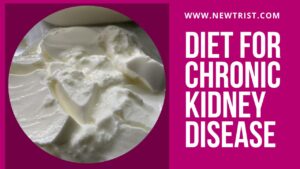
Chronic Kidney Disease
Conditions that harm the kidneys and lessen their capacity to keep people healthy by filtering waste from the blood are included in chronic kidney disease. Wastes can accumulate in high amounts in the blood and cause illness if the renal disease progresses. One could have issues like:
- High blood pressure
- Anemia (low blood count)
- Weakness in the bones
- Nutritional deficiencies
- Nerve injury
The most common causes of chronic kidney disease are other illnesses that place stress on the kidneys. It frequently happens as a result of several distinct issues together.
CKD may result from:
- High blood pressure – over time, this can strain the kidneys’ smaller blood arteries and prevent them from functioning properly.
- Diabetes – having too much glucose in your blood can harm your kidneys’ little filters.
- A build-up of fatty deposits in the blood vessels supplying your kidneys due to high cholesterol may make it more difficult for them to function correctly.
- Renal disease
- Glomerulonephritis: Inflammation of the kidneys
Blockages in the flow of urine, such as those caused by kidney stones that keep recurring or an enlarged prostate, or long-term consistent use of certain medications, such as lithium and non-steroidal anti-inflammatory medicines, can cause polycystic kidney disease, an inherited condition where growths called cysts to develop in the kidneys (NSAIDs)
Diet For Chronic Kidney Disease Stage 3
This chronic kidney disease diet food list includes grains, vegetables, fruits, milk products, lean protein, and healthy fat.
|
Food Group |
Menu |
|
Grains |
Rice, Pasta, Cereal, Bread |
|
Vegetables |
Vegetable Salad, Vegetable curries |
|
Fruits |
Whole Fruits |
|
Milk and milk products |
Yogurt, Milk |
|
Lean meats, poultry, and fish |
Boiled Egg White, Lean Meat Gravy, and Fish curries |
|
Fats and oils |
Vegetable Oil |
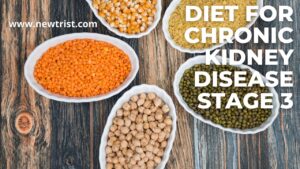
Dietary Management Of Chronic Kidney Disease
Chronic kidney disease diet food list: Carbohydrates
Carbohydrates are a great source of energy if one doesn’t have any issues with them. If a healthcare professional has advised a low-protein diet, one can substitute the protein-related calories with veggies, grains, bread, and fruits. In addition to offering energy, these foods also have fiber, vitamins, and minerals.
Chronic kidney disease diet food list: Protein
Before a patient begins dialysis, low-protein diets may be beneficial. A lower-protein diet may be suggested by the doctor or nutritionist depending on the weight, illness stage, level of muscle, and other considerations. One must still consume adequate protein.
One must eat more protein once one begins dialysis. It may be advised to consume fish, poultry, or eggs with every meal as part of a high-protein diet.
Dialysis patients need to consume 80 g of high-protein foods daily. Egg whites, egg white powder, or protein-rich foods may be suggested by the healthcare professional or nutritionist.
Chronic kidney disease diet food list: Fats
A good source of calories can be found in fats. To safeguard the function of the heart, make sure to consume monounsaturated and polyunsaturated fats (such as safflower, canola, and olive oils). The fats and cholesterol may raise the risk of heart disease as excess fat and cholesterol may create a blockage in the blood vessels of the heart.
Chronic kidney disease diet food list: Fluid
Fluid restriction may not be needed if the person is in the early stages of renal failure. But they need to be careful how much liquid they consume if their condition worsens or when they start receiving dialysis.
The body may retain fluid in between dialysis sessions. Shortness of breath is an emergency that requires quick medical attention if there is too much fluid retention in the body.
The doctor and the dialysis nurse give information on the amount of daily fluid consumption. Keep track of the items that are high in water content, including soups, fruit-flavored gelatin, ice pops, ice cream, grapes, melons, lettuce, tomatoes, and celery.
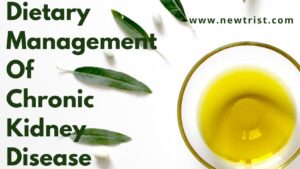
Chronic Kidney Disease Meal Plan
This chronic kidney disease diet food list includes milk products, greens, whole grains, fruits, and eggs.
|
Meal timing |
Menu |
|
Morning |
Milk |
|
Breakfast |
Dosa + Sambhar + mint chutney |
|
Mid-morning |
Pear |
|
Lunch |
Rice + Palak paneer + Kadai mushroom + boiled egg |
|
Evening |
Sprouts |
|
Dinner |
Idli + Aloo kofta curry |
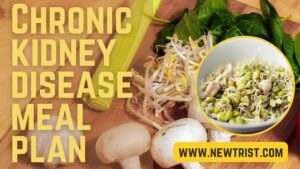
Foods Good For Chronic Kidney Disease
The chronic kidney disease diet food list includes cauliflower, blueberries, sea bass, eggs, garlic, skinless chicken, onion, and pineapple.
Several nutrients, including Vitamins C, K, and B, are abundant in cauliflower. Furthermore, it possesses anti-inflammatory qualities. The amounts of sodium, potassium, and phosphorus in one cup or 124 grams of cooked cauliflower are 19 mg, 176 mg, and 40 mg, respectively.
Numerous nutrients and antioxidants found in abundance in blueberries help to prevent numerous diseases, such as cancer, diabetes, and heart disease. This fruit’s low sodium, potassium, and phosphorus content make it a great complement to the renal diet. Fresh blueberries have 1.5 mg of salt, 114 mg of potassium, and 18 mg of phosphorus per cup, respectively.
Omega-3 fatty acids and high-quality protein can both be found in sea bass. Additionally, 85 grams of cooked sea bass include 74 mg of sodium, 279 mg of potassium, and 211 mg of phosphorus.
High-quality proteins abound in egg whites, which also produce a dish that is good for the kidneys. 66 grams of egg whites provide 110 mg of sodium, 108 mg of potassium, and 10 mg of phosphorus, respectively.
Garlic is a wonderful substitution for salt and herbs and gives any cuisine a delightful flavor. Additionally, it is rich in manganese, vitamin C, vitamin B6, and anti-inflammatory qualities. 9 grams of garlic contain 1.5 mg of sodium, 36 mg of potassium, and 14 mg of phosphorus, respectively.
Compared to chicken with skin on, skinless chicken is lower in salt, phosphorus, and potassium. A chicken skinless breast weighing 84 grams has 63 mg of sodium, 216 mg of potassium, and 192 mg of phosphorus respectively.
When it comes to a renal diet, onions are excellent flavor enhancers. Onions are also a good source of manganese and B vitamins. 70 grams of onions have 3 mg of sodium, 102 mg of potassium, and 20 mg of phosphorus respectively.
Fruits with low potassium content, like pineapple, are an excellent addition to a kidney diet. In addition, it is a good source of manganese, bromelain, vitamin C, and fiber. 165 grams of pineapple contain 2 mg of sodium, 180 mg of potassium, and 13 mg of phosphorus, respectively.
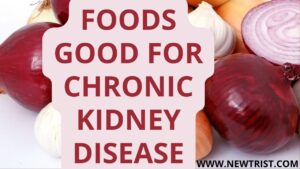
Chronic Kidney Disease Stage 4 Diet Plan
Consumption of liquids, including water and liquid food, should be limited, according to the severity of the disease. A daily weight log must be kept. Any unnatural weight gain may be a sign of increased fluid intake.
Carbohydrates: If a CKD patient is not diabetic, he or she can eat carbohydrate-rich foods along with cereal to ensure that the body gets enough calories.
Protein: The main sources of protein include lean meat, milk, grains, legumes, eggs, and poultry. Patients with CKD who are not under dialysis are advised to keep their daily protein intake to 0.8 grams/kg body weight or less. Dietary intake can be raised to 1-1.2 grams/kg body weight/day once dialysis has begun. Patients receiving peritoneal dialysis could require up to 1.5 grams of dietary protein per kilogram of body weight each day.
Animal proteins, which are complete proteins or proteins with high biologic value because they contain all required amino acids, are optimal and should be consumed in moderation, especially in patients who are not yet receiving dialysis since they may hasten the course of CKD.
Since they are a rich source of calories, fats can be used as a source of energy. It is acceptable to consume small amounts of monounsaturated and polyunsaturated fats in the form of olive oil, safflower oil, canola oil, or soybean oil. Steer clear of saturated fats like those in animal lard.
Salt: A low-salt diet is recommended for the majority of patients. Following a “no added salt” diet is an excellent idea. Look at food labels and choose low-sodium options, but make sure to steer clear of salt substitutes that are also high in potassium. Look for additional foods that include salt on food labels, such as sodium bicarbonate (baking powder), and stay away from them.
Cereals: You can consume rice or rice derivatives like flattened rice. One can opt for alternate eating of different kinds of cereals like wheat, rice, sago, semolina, all-purpose flour, and cornflakes to avoid taste monotony. It is possible to consume little amounts of grain and barley.
Vegetables: It is recommended to consume a lot of low-potassium vegetables. However, before eating vegetables with a high potassium content must be treated to eliminate the potassium. The addition of lemon juice can enhance flavor.
Fruits: Only one serving of low-potassium fruits per day, such as apples, grapes, and berries, should be consumed. Patients are allowed to eat one fruit on the day of their dialysis. Coconut water and fruit juices must be avoided.
Milk and milk products: Milk and milk products, such as milk, yogurt, and cheese, need to be limited because they contain high levels of phosphorus. Butter, cream cheese, ricotta cheese, sherbets, and non-dairy whipped toppings are some other dairy products with a lower phosphorus content.
Cold beverages: Stay away from dark-colored sodas because they contain a lot of phosphorus. Fruit juice and coconut water shouldn’t be consumed because of the possibly high potassium levels.
Dry fruits and Nuts: It is better to stay away from dry fruits, groundnuts, sesame seeds, and fresh or dry coconut.
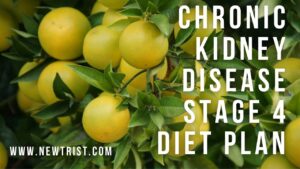
Chronic Kidney Disease Protein
Body tissues require protein for maintenance and repair. Additionally, it aids in wound healing and infection prevention. For CKD patients who are not on dialysis, protein restriction (0.8 gm/kg body weight/day) is advised to slow the rate of renal function deterioration and postpone the need for dialysis and kidney transplantation. However, as it increases the chance of malnutrition, severe protein restriction should be avoided.
Patients with CKD frequently have poor appetites. A lack of appetite and a tight protein restriction can raise the risk of death by causing malnutrition, weight loss, a lack of energy, and a decrease in physical resistance. The best proteins to eat are those with a high biologic value, such as animal proteins (meat, poultry, and fish), eggs, and tofu. In CKD patients, high-protein diets like the Atkins diet should be avoided.
It is advisable to avoid using protein supplements and medications, which are used to build muscles unless a doctor or nutritionist has approved them. To make up for the proteins lost during dialysis, a patient’s protein intake should be raised to 1.0 to 1.2 gm/kg body weight/day once they begin treatment.
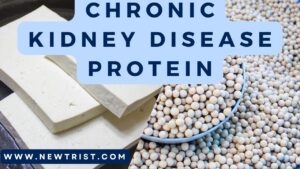
Chronic Kidney Disease Diet Potassium
Potassium is a vital mineral that the body needs for muscles, neurons, and the regular heartbeat to function properly. Normal potassium levels in the body are maintained by including foods high in potassium and eliminating extra potassium through the urine.
In a patient with chronic kidney disease, the kidneys may not be able to eliminate extra potassium in the urine, which could result in the blood potassium level accumulating to a high level (a condition known as Hyperkalemia). Patients receiving peritoneal dialysis have a lower chance of developing Hyperkalemia than those receiving hemodialysis.
Because peritoneal dialysis is a continuous process and hemodialysis is an intermittent one, the risk varies between the two groups.
A hazardous cardiac rhythm or significant muscle weakness might be brought on by high potassium levels. When potassium levels are extremely high, the heart may suddenly stop beating, leading to sudden death. High potassium levels can be fatal without any obvious signs or symptoms (and therefore it is known as a silent killer).
Patients with CKD are recommended to limit their potassium intake to prevent the dangerous repercussions of elevated potassium levels.
Foods with high potassium content:
- Fresh apricots, ripe bananas, chicos, coconuts, custard apples, gooseberries, guavas, kiwis, ripe mangoes, oranges, papayas, peaches, and plums are among the fruits.
- Broccoli, cluster beans, cilantro, drumstick, mushroom, raw papaya, potato, pumpkin, spinach, sweet potato, tomatoes, and yam are some of the vegetables.
- Dates, dry figs, raisins, walnut, almond, and cashew nut.
- Foodstuffs: Wheat flour
- Animal products: Shellfish like prawns, lobster, and crabs, as well as fishes like anchovies and mackerel
- Condensed milk, chocolate beverages, fresh fruit juices, soup, and numerous aerated beverages are the beverages that are to be avoided.
- Other: Lona salt (a salt alternative), potato chips, tomato sauce, and items made from chocolates.
Foods with Medium Potassium Content:
- Ripe cherries, grapes, lychees, pear, delicious lime, and watermelon are among the fruits.
- French beans, okra (ladies-finger), raw mango, onion, radish, green peas, sweet corn, raw banana, bitter gourd, cabbage, carrot, celery, cauliflower, raw safflower leaves, and raw okra.
- Barley, all-purpose flour, and rice flakes (pressed rice) are examples of cereals.
- Red, black, and mung (moong) beans are examples of legumes.
- Animal products: Liver and organ meats.
Foods with Low Potassium Content:
- Apple, blackberries, lemon, pineapple, strawberries, and other fruits
- Broad beans, capsicum, cucumber, garlic, lettuce, green peas, raw mango, and pointed gourd are among the vegetables.
- Rice, Rava, and wheat semolina are cereals.
- Green peas are a legume.
- Non-vegetarian: Lamb, chicken, and eggs
- Beverages include soda, Coca-Cola, coffee, lemonade, and lime juice in water.
- Cloves, dried ginger, honey, mint leaves, mustard, nutmeg, black pepper, and vinegar are among the other ingredients.
To reduce potassium in food:
- Consume one fruit with low potassium each day.
- One cup of tea or coffee each day is permitted.
- After lowering the potassium intake, potassium-containing vegetables should be consumed.
- Stay away from coconut water, fruit juices, and foods high in potassium.
- Since potassium is included in almost all foods, it’s important to select foods with low potassium levels wherever possible.
- Potassium restriction is important for all CKD patients, not only those who are pre-dialysis; it is also necessary once dialysis has begun.
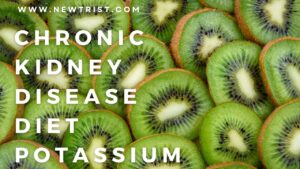
Chronic Kidney Disease Menu Plan
This chronic kidney disease diet food list includes nuts, vegetables, fruits, whole grains, herbs, and spices.
|
Morning |
Fresh almond milk |
|
Breakfast |
Vegetable sandwich |
|
Mid-morning |
1 cup blueberries |
|
Lunch |
Tex Mex Rice and Beans |
|
Evening |
Pineapple slices |
|
Dinner |
Grilled corn tacos |
|
Bedtime |
Turmeric milk |
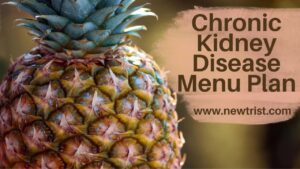
Vegetables Good For Chronic Kidney Disease
The chronic kidney disease diet food list can include below vegetables.
- Broccoli
- Carrot
- Cauliflower
- Cabbage
- Eggplant
- Lettuce
- Cucumber
- Celery
- Onions
- Peppers
- Zucchini
- Yellow squash
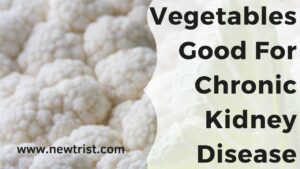
Plant-based Diet For Chronic Kidney Disease
This chronic kidney disease diet food list includes herbs, vegetables, fruits, legumes, milk products, and greens.
|
Morning |
Herbal tea |
|
Breakfast |
Vegetable khichdi |
|
Mid-morning |
Fruit salad (with low-potassium fruits) |
|
Lunch |
Cabbage peas pulao |
|
Evening |
Paneer Frankie |
|
Dinner |
Dhalia Kitchdi + mint chutney |
|
Bedtime |
Valerian Tea |
